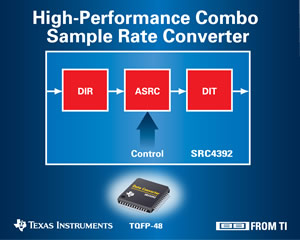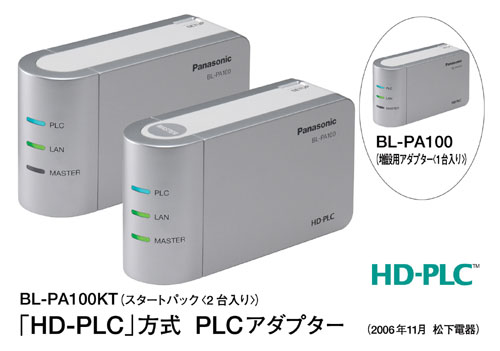 |
||
|
||
| ||
No More Pentium E1000? Intel Unveils Plans For Pentium E2000 PS3 Lands, Flies Off The Shelf NEC LCD Develops 3.5-Inch New System-on-Glass LCD Module Renesas Releases E8a Emulator For Microcontroller Development TI Delivers Combo Sample Rate Converter For Pro Audio Applications Panasonic Introduces HD-PLC Ethernet Adaptor No More Pentium E1000? Intel Unveils Plans For Pentium E2000 A source among manufacturers reported that Intel has cancelled Pentium E1000 previously planned to release in Q207. Instead, a new dual core Pentium E2000 family is introduced, enlarging the popularity of dual core processor. In the previous plan, Pentium E1000 (Conroe-L) family are single-core processors which include E1020 (1.4GHz/1MB L2/800MHz FSB), E1040 (1.6GHz/1MB L2/800MHz FSB), and E1060 (1.8GHz/1MB L2/800MHz FSB). They are set to replace the market of single-core Netburst. However, as dual core is already popular, single core hasnít got much room to live, and hence Pentium E2000 family now bears the mission to replace the market instead. Conroe-L is kept for Celeron only. According to the latest roadmap from Intel, Pentium E2000 is based on native L2 stepping 2MB Conroe core, in which 1MB of the L2 cached is disabled. This family is available from Q307 including E2140 (1.6GHz/1MB L2/800MHz FSB) and E2160 (1.8GHz/1MB L2/800MHz FSB). Enhanced Intel SpeedStep (EIST), Intel 64 (I64) and Execute Disable Bit (XD Bit) are supported like Core 2 Duo. Yet Intel Virtualization (VT), ViiV and vPRO are excluded for separating the market. In addition, Intel has updated its shipment estimation. In Q107, Pentium 4 single core share about 18% of the total shipment for Desktop computer. The proportion is expected to slip gradually. As 90nm Pentium 4500 and 600 family are cut in Q207, the only left will be 65nm Pentium 4 6x1 where the shipment share has dropped to 7% or lower. Stepping in Q307, the Era of Netburst comes to the end as Pentium D and Pentium 4 are both terminated at that time already. The vacancies of market are replaced by Core 2 Duo E4000 and Pentium E2000. Intel expects Pentium E2000 will share 18% of the total shipment when launched.  Source: HKEPC
PS3 Lands, Flies Off The Shelf Playstation 3 finally arrived here over the weekend (Nov. 11), one week ahead of the U.S. market. About 100,000 units shipped Saturday (Nov. 11) and immediately flew off store shelves. Hundreds lined up around major retailers here before dawn and stories were sold out by 7 a.m. Sony Computer Entertainment Inc. shipped 100,000 units for sale here the first day and will ship 400,000 units for the U.S. launch on Nov. 17. Sony still plans to ship 1 million units in Japan and another 1 million units in the U.S. by the end of this year. A "laser diode production glitch was solved, but we are still having tough time catching up," a Sony spokeswoman said. Sony has not disclosed when and how many additional Playstation 3 units will be shipped after the launch. Nintendo will launch its Wii game console in the U.S. on Nov. 19. It will be launched here on Dec. 2. About 400,000 units will be shipped here and a larger number to the U.S. market, a Nintendo spokesman said. Microsoft Corp. will also introduce the Core system, a cheaper version of Xbox 360 on Nov. 22 in the U.S. and Dec. 10 in Japan. Facing stiff competition, "Playstation 3 will make a slow start," said Hirokazu Hamamura, president of Enterbrain Inc., a Tokyo-based game market researcher. Enterbrain estimates that PS3 shipments will reach 4.13 million units by March 2007, lower than Sony's planned 6 million units. "PS3 will have a difficult time at the beginning," Hamamura said. PS3 game titles at launch are limited, he added. By contrast, Wii will make a fast start. Nintendo plans to ship 4 million units worldwide by the end of the year. Meanwhile, about 8.85 million Xbox 360 units will be shipped by the end of the year, Enterbrain said. PS3 sales, however, are expected to accelerate and eventually surpass Wii by the end of 2007. It will nearly catch up with Xbox 360 shipments by the end of 2008, Enterbrain projects. "Sales of PS3 will grow rapidly in its second to third year when [Sony] lowers the prices of PS3. The potential demand is quite high because of its performance," Hamamura said. Source: EETimes
NEC LCD Develops 3.5-Inch New System-on-Glass LCD Module NEC LCD Technologies, Ltd. today announced the development of a 3.5-inch (8.9cm diagonal), quarter high definition (QHD) system-on-glass (SOG) liquid crystal display module for mobile devices. Successful mass production trials for the new low temperature poly-silicon (LTPS) thin-film-transistor color LCD modules began at NEC Akita, Ltd. on October 1.  The new SOG module has been realized by the following:
The complete specs are here. The new models will be displayed at Inter BEE 2006, being held at Makuhari Messe, Japan, from November 15 Ė 17.
Renesas Releases E8a Emulator For Microcontroller Development Renesas Technology Corp. today announced an ultra-small, low-priced, environment-friendly on-chip debugging emulator dubbed "E8a Emulator" as a development tool for Renesas microcontrollers. Sample shipments will begin in February 2007 in Japan. This emulator is the successor to the E8 Emulator low-priced development tool for Renesas microcontrollers such as M16C Family and others. The E8a Emulator has been reduced in volume to approximately 40% that of the E8 Emulator while inheriting its emulation functions and ease of use. In addition, the range of applicable microcontrollers for the programming function for on-chip flash and other memory has been greatly extended.  The E8a Emulator offers the following features:
As with the E8 Emulator, this new emulator employs a method whereby communication with the debugger is performed by means of a single pin for the R8C/Tiny Series. Connection via a single pin allows debugging of all I/O pins in their actual operating state, and enables efficient program development to be carried out. A Windows-compatible PC can be used as the host computer, connected via a USB V2.0 (Full Speed) interface allowing high-speed serial communication. The E8a Emulator operates in bus-powered mode using the USB power supply, allowing simple connection with no need for a separate power cable. The High-performance Embedded Workshop integrated development environment is used for the user interface, linking together a variety of software including a C++ compiler, debugger, and linker. This allows efficient program development by controlling various tasks from programming to building and debugging via an integrated man-machine interface. When the E8a Emulator is used as a programmer that writes to flash memory, combined use with the Flash Development Toolkit software provided by Renesas enables products in the SuperH Family and so forth to be supported. The Flash Development Toolkit is software offering such features as automatic disconnection after programming and automated operation by means of a script (command-based batch processing), and includes useful functions that can also be applied to a userís volume production processes and the like. The interface to the user system is implemented via a 14-pin connector compatible with the current E8 Emulator, allowing direct use of third-party products and user systems equipped with an E8 Emulator standard interface. The E8a Emulator will be exhibited at "Embedded Technology 2006" being held at Pacifico Yokohama from November 15 to 17. Source: Renesas Technology Corp.
TI Delivers Combo Sample Rate Converter For Pro Audio Applications Texas Instruments Incorporated introduced the industry's highest performance, combo sample rate converter (SRC) from the company's Burr-Brown pro audio product line. The SRC4392 integrates a two-channel asynchronous SRC with a digital audio interface receiver (DIR) and transmitter (DIT). Featuring 144dB dynamic range, -140dB distortion and up to 216kHz sampling rates, the device is used in a variety of professional and broadcast audio applications, such as digital mixing consoles, digital audio workstations, audio distribution and broadcast studio equipment.  The SRC4392 combines a wide input-to-output sampling ratio, handling all major audio rates up to 216kHz, with dynamic range of 144dB and distortion of -140dB THD+N. SPI or I2C interface provides access to on-chip registers and data buffers. The SRC43x2 family includes a lower-cost, pin-compatible device, the SRC4382, with 128dB dynamic range and -125dB THD+N. Both devices operate from a +1.8V core supply and a +3.3V digital I/O supply. The SRC4392 and SRC4382 are available now from TI and its authorized distributors in small 48-lead TQFP packages. The SRC4392 is priced at $9.95 in 1,000-piece quantities; the SCR4382 is priced at $7.50 in 1,000-piece quantities (suggested resale pricing). Source: Texas Instruments Incorporated
Panasonic Introduces HD-PLC Ethernet Adaptor Panasonic, the brand for which Matsushita Electric Industrial Co., Ltd. is known, introduced today a power line Ethernet adaptor that can create a high-speed local area network anywhere in the home by simply plugging into a wall outlet. The BL-PA100 adaptor, available in Japan on December 9, uses "HD-PLC" technology to achieve physical layer data rates of 190 Mbps and seamless and secure communication that can coexist with other electric or radio devices used in the home. The new Panasonic compact adaptor, measuring approximately 121 x 40 x 70 mm, uses existing power lines, it does not require room-to-room cabling to establish a local area network. With its AES 128-bit encryption, the BL-PA100 adaptor also provides the same level of protection given by most Internet banking and shopping sites.  Panasonic has prepared a starter kit (BL-PA100KT) for ease of installation. The kit includes two preconfigured BL-PA100 adaptors - one is used as the Master and the other as a Terminal adaptor. The kit allows the average person to easily establish a secure network without using a PC. Simply plug in the Master adaptor into a power outlet and connect a broadband router/modem to the adaptor. Then plug in the Terminal adaptor to a wall outlet in another room where you want to access the network. PC and other network "clients," such as Panasonic IP network camera, can be connected to the Ethernet port of the Terminal adaptor. Now, each network client will be able to access the Internet as well as communicate with each other. Adding another Terminal adaptor is also simple. Plug a second Terminal adaptor, which is sold individually, to the same power outlet as the Master and press the "Setup" buttons on both units simultaneously to register the Terminal. Once registered, the adaptor can be placed in power outlets anywhere in the house. Also, the clients can be connected to any Terminal adaptors in the house to communicate on the network. A total of 15 Terminal adaptors can be connected to the system. Panasonic also announced today availability of "HD-PLC" module samples for other electronics manufacturers. Using Panasonic's own technology for embedding passive and active components into the substrate without damages, the MMDPMS150 series module takes up 40 per cent less space than conventional modules with similar functionality. As this compact module already incorporates such analog components as noise reduction filters, the manufacturers can easily develop products with high-speed PLC function. Panasonic plans to start sample shipments on December 1. Source: Panasonic
Write a comment below. No registration needed!
|
Platform · Video · Multimedia · Mobile · Other || About us & Privacy policy · Twitter · Facebook Copyright © Byrds Research & Publishing, Ltd., 1997–2011. All rights reserved. |